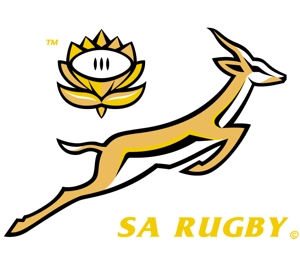Law variations in use in South Africa in 2013
 This year, the International Rugby Board has introduced 11 law trials that will be implemented from the start of the 2013 season. Seven of these have a bearing on play and most of them are designed to make the game faster, with less time wasted, and so improve the overall spectator experience.
This year, the International Rugby Board has introduced 11 law trials that will be implemented from the start of the 2013 season. Seven of these have a bearing on play and most of them are designed to make the game faster, with less time wasted, and so improve the overall spectator experience.
Extensive global research involving players, coaches, referees and on-field trials took place before the trials were introduced, according to Andre Watson, GM Referees at SARU.
“An example of this was the extended powers afforded to Television Match Officials (TMOs) during last season’s Absa Currie Cup,” said Watson. “This will be trialled worldwide this season with a view to it becoming Law in 2014,” said Watson.
“Some of the new law variations we will use in South Africa this season, were used by the Springboks during the Castle Outgoing Tour in November 2012.”
New law variations in 2013 in South Africa:
Five seconds at the ruck
When the ball becomes available at a ruck, the referee will call “use it” and the scrumhalf then has five seconds to clear the ball by passing or running it. This will speed up play by not allowing the team in possession to slow it down, and giving the defenders less time to set up their defensive structures and the attackers the opportunity to be more creative.
Three-word scrum call
The four-step engagement call has now been shortened in senior rugby to ‘crouch-touch-set’. The word ‘set’ is shorter and quicker to say than ‘engage’ and is expected to produce better timing and adherence by the front rows. The removal of the spoken ‘pause’ does not take away the actual pause, as the two front rows are expected to remain stationary and still before engaging on the ‘set’ call. At amateur age-group levels, additional modifications have been introduced to minimise the risk of the ‘hit’ at engagement and collapsed scrums, and improve the safety of the players.
Quick throw-in
The non-offending team may now take a quick throw-in from anywhere between their corner post and where the lineout would take place.
Additional powers for the TMO
The expanded TMO functionality includes identifying foul play, and clear and obvious infringements in the last two phases before a try is scored. All officials (the referee, assistant referees and TMO) are allowed to initiate a referral and make recommendations.
Other modifications include:
- Increasing the squad to 23 players for international matches, with specialist replacements for each of the three front-row positions.
- The reintroduction of a stud on the front of the boot (this was banned in the 1980s).
- Allowing players to wear GPS units on the field.
- Allowing women to play with long tights.
- Stipulating that conversion kicks to be taken within 90 seconds of scoring a try.
- The option of choosing a scrum when the opposition knocks on or throws forward and the ball goes into touch.
- If a team is awarded a penalty or free kick in the lineout, they have the option of taking the lineout again without having to kick for touch.
The new 2013 Law books are available online from www.sareferees.co.za for R100 including VAT and postage in South Africa.
Related Posts
« SARU referees fit and ready to keep leading the way Full Hurricanes squad to visit Paraparaumu »


















